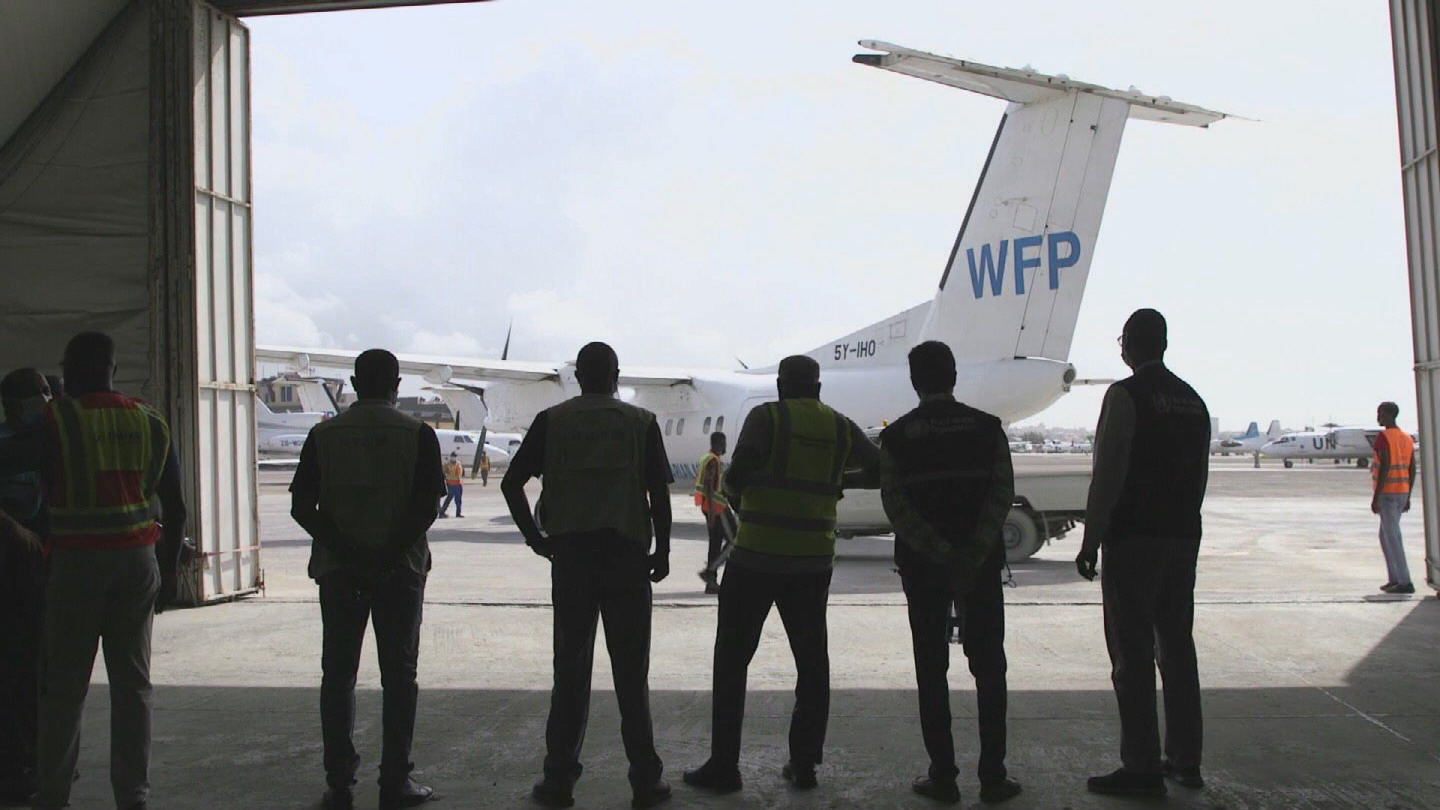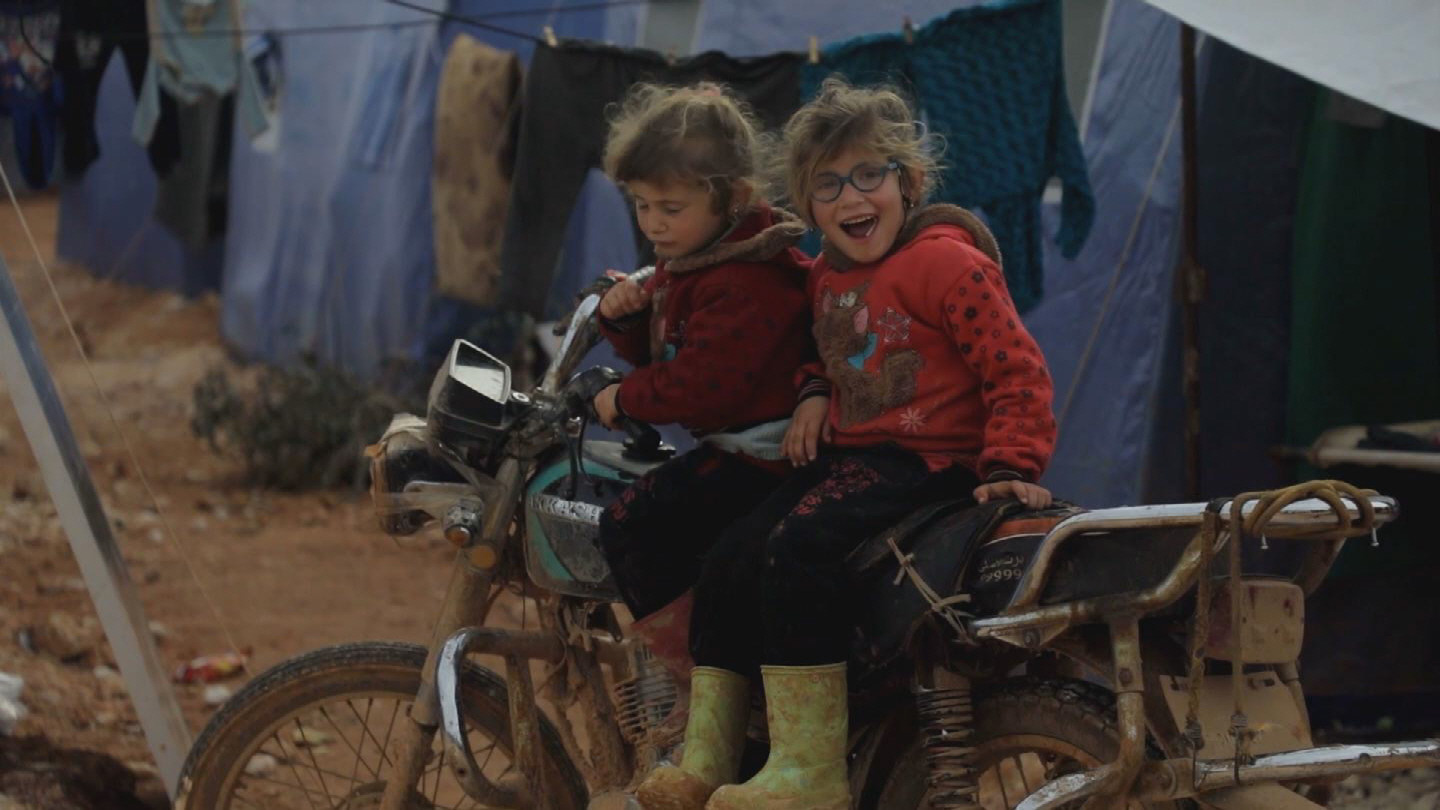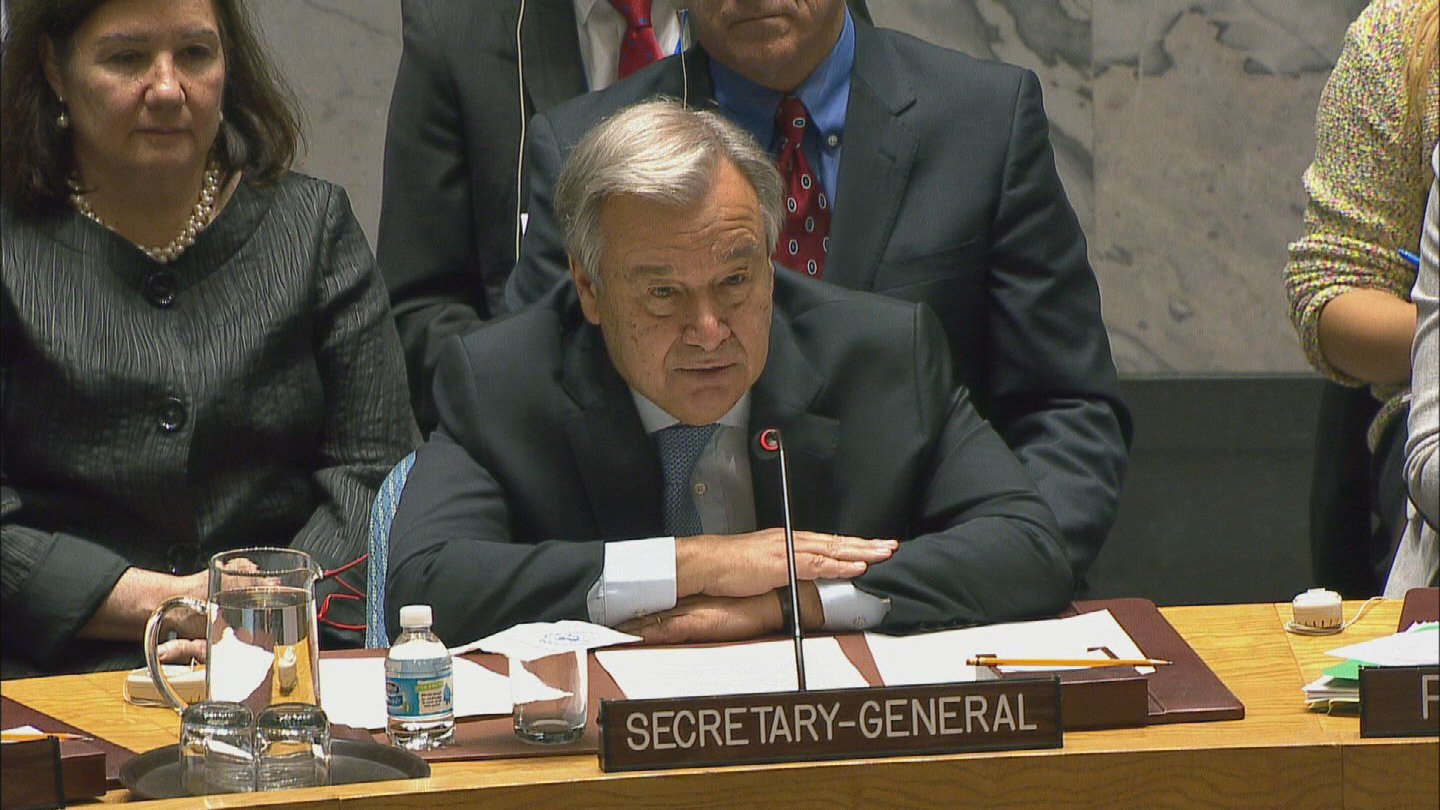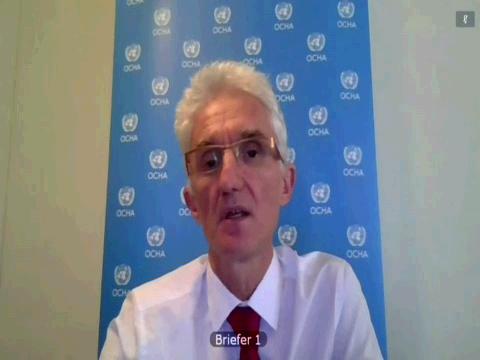WFP / HUNGER MIGRATION
Download
There is no media available to download.
Share
STORY: WFP / HUNGER MIGRATION
TRT: 02:27
SOURCE: WFP
RESTRICTIONS: EMBARGOED UNTIL 5 MAY 2017 09:00 CET
LANGUAGE: ENGLISH / NATS
DATELINE: 1 MAY 2017, BAR ELIAS, LEBANON / 2 MAY 2017, DAMASCUS, SYRIA / 8 MAY 2016, AWENG, SOUTH SUDAN / 13 APRIL 2015, OBOCK PORT, DJIBOUTI / 13 MARCH 2017, NEAR GARDO, SOMALIA / 10 MARCH 2017, PEACE HOTEL, MOGADISHU, SOMALIA / 27 APRIL 2017, YADE, CENTRAL AFRICAN REPUBLIC
1 MAY 2017, BAR ELIAS, LEBANON
1. Wide shot, camp
2. Various shots, people in the camp
2 MAY 2017, DAMASCUS, SYRIA
3. Wide shot, WFP food distribution centre
4. Various shots, food distribution
5. Wide shot, woman walking away with food supplies
6. Med shot WFP Executive Director, David Beasley, helping with food distribution
7. Med shot, Beasley talking to a displaced woman
8. SOUNDBITE (English) David Beasley, Executive Director, World Food Programme (WFP):
“Because of the crisis, the conflict, people have to move, they have to find food and when they can’t find food they’re going to go wherever they can get it and that’s why you have migration, that’s why you have people moving in the millions and from Syria alone you’ve got over 5 million that are refugees that have left the country, you have another 6 million give or take, that are internally displaced, they’ve moved from their primary home and they don’t want to do that but they’ve got to go where there’s safety and where there’s food.”
8 MAY 2016, AWENG, SOUTH SUDAN
9. Various shots, farmer family on a two week journey by foot to find food
13 APRIL 2015, OBOCK PORT, DJIBOUTI
10. Wide shot, ship at sea
11. Wide shot, ship at the dock
12. Wide shot, Yemeni refugees boarding a van upon arrival
13. Various shots, Yemeni refugees receiving food aid
13 MARCH 2017, NEAR GARDO, SOMALIA
14. Wide shot, Somali woman walking across desert
10 MARCH 2017, PEACE HOTEL, MOGADISHU, SOMALIA
15. Various shots, destroyed hotel building
27 APRIL 2017, YADE, CENTRAL AFRICAN REPUBLIC
16. Various shots, destroyed house
At a time when a record-high number of people have been forced to flee their homes across the world, a new study by the United Nations World Food Programme (WFP) clearly establishes that high levels of food insecurity lead to higher levels of migration across borders.
1 million Syrian refugees are currently living in Lebanon. They make up 20 percent of Lebanon’s population. Many of them live in settlements like this one in the Bekaa valley within miles of the Syrian border.
WFP Executive Director, David Beasley, visited a food distribution centre in Damascus.
SOUNDBITE (English) David Beasley, Executive Director, World Food Programme (WFP):
“Because of the crisis, the conflict, people have to move, they have to find food and when they can’t find food they’re going to go wherever they can get it and that’s why you have migration, that’s why you have people moving in the millions and from Syria alone you’ve got over 5 million that are refugees that have left the country, you have another 6 million give or take, that are internally displaced, they’ve moved from their primary home and they don’t want to do that but they’ve got to go where there’s safety and where there’s food.”
Aping Riang, a farmer, his pregnant wife and 5 children head off from their home in South Sudan on a two week journey by foot to Darfur to find food. Famine has been declared in South Sudan. Hunger caused by conflict and drought has caused almost 2 million South Sudanese to flee their country.
Yemeni refugees, mostly from Aden, arrive in Djibouti. UNHCR say almost 200,000 people have fled Yemen since the conflict began.
Somalia has experienced a surge in extreme hunger due drought in the last year and half sending people from rural areas to Mogadishu and across borders into neighbouring countries like Kenya and Ethiopia.
Insecurity and instability is another contributor to extreme hunger in Somalia.
Rubble is all that is left of the area around the former Peace Hotel after a truck loaded with explosives blew up killing 9 and injuring 21 in January 2017.
Fighting in C.A.R. has prevented people from their homes and their fields. 40 percent of the children in C.A.R. suffer from stunting. One in every five Central Africans is either internally displaced or a refugee in neighbouring countries. Marcel Hamat, 52 years old, salvaging household articles from his home that was recently burnt in an attack.
The WFP report determined that each one percentage increase in food insecurity in a population compels 1.9 percent more people to migrate. Further, 0.4 percent more people flee a country for each additional year of conflict. This means that a country with rising levels of food insecurity and conflict will experience greater outward migration, or movement of people away from their homes.
WFP also found that food insecurity is a significant cause for the incidence – and intensity – of armed conflict. Once a migrant’s journey has begun, lack of employment combined with little or no access to food and other humanitarian assistance are significant push factors that compel people to continue to move. Further, as people seek to reduce their food insecurity through migration, the act of migration itself can cause food insecurity, given the costs and often hazardous conditions along the journey.








